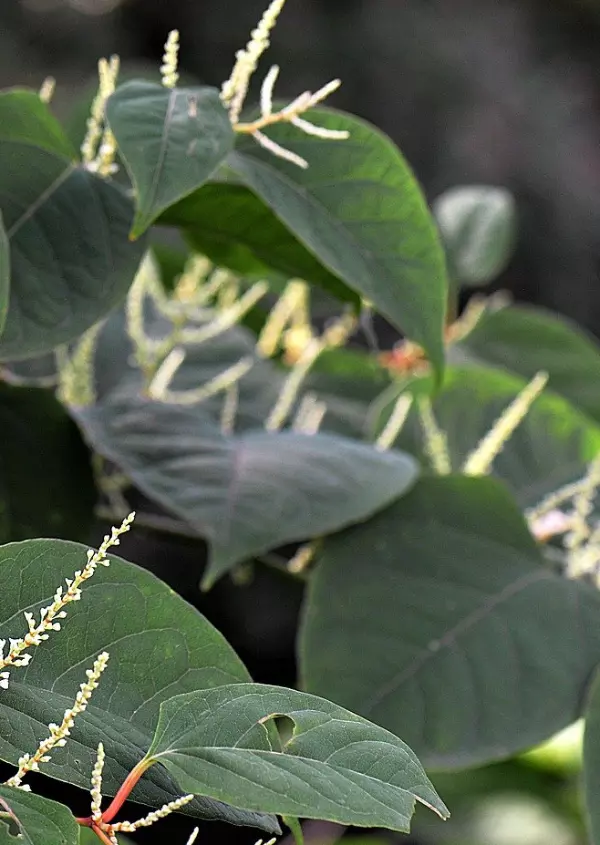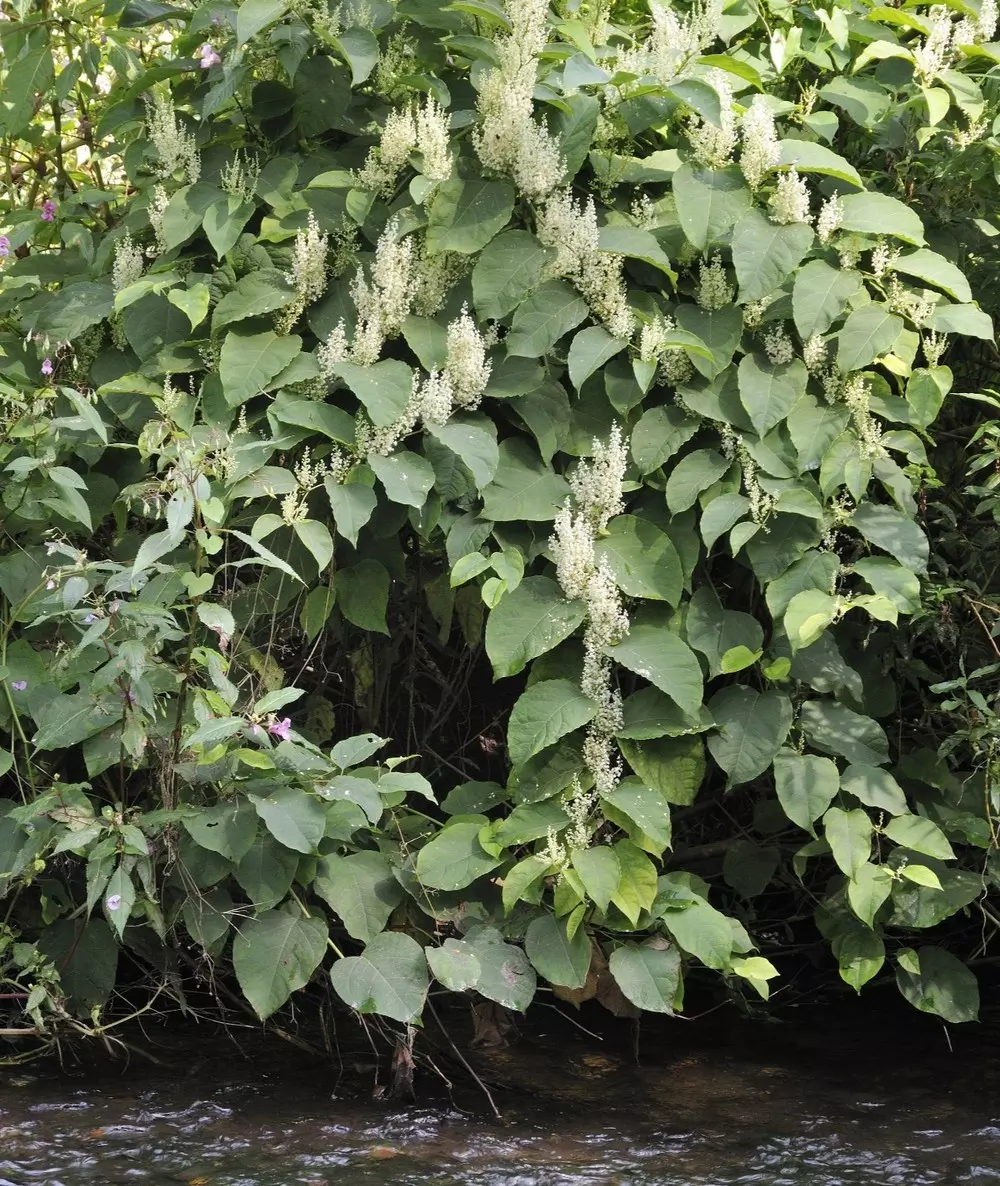Steps to Permanently get rid of Japanese knotweed from your property
Permanently getting rid of Japanese knotweed in your garden requires no cutting corners and tackling the weeds as soon as they are spotted. While there a no quick fixes to remove and kill Japanese knotweed, there are some methods you can do yourself to get rid of Japanese knotweed on your property permanently
1st
identify the Japanese knotweed as soon as possible; you must eliminate the possibility that the weeds on your property are not another plant. Bindweed, shrubs, and broadleaved docks are commonly mistaken for Japanese knotweed, so become familiar with what they look like.
2nd
remove the knotweed (cut canes) with some sheers or something similar as close to the root as possible. To ensure your safety and prevent you from spreading the plant rhizomes outside of the infestation, equip yourself with a professional Japanese knotweed bodysuit, mask and safety gloves.
One of the best weed killers for Japanese Knotweed is a glyphosate-based concentration
This is proven at killing the knotweed, so spray this on the weeds, leave the glyphosate to sit for at least seven days and ensure no other plants are sprayed with the concentration as it will kill any vegetation it comes into contact with.
Once the concentration has been left for at least seven days, pull the Japanese knotweed from the roots, all roots must be pulled from the ground, so dig if you need to.
Any regrowth or leftover shoots/roots should be removed as soon as they are spotted, so mow the surrounding vegetation and plants every week. Japanese knotweed waste should be disposed of properly in a knotweed permitted disposal facility.
The glyphosate solution should be reapplied at least twice a year, wearing the Japanese knotweed safety clothing as previously advised. It may be a good idea to add root barriers to your garden to prevent the spread of rhizomes from the Japanese knotweed.
The knotweed could also be round up, dried out and then left in a safe area of land to burn. If you are using the burning method, check with an environmental agency to ensure this is the correct method.

Japanese knotweed has been proven very difficult to remove permanently without the assistance of a professional. Therefore it is recommended to seek help from a PCA accredited company that guarantee permanent removal and offer professional advice.
What does Japanese knotweed look like?
Japanese knotweed is a rapidly growing weed (up to 2cm a day) that spreads very easily; if ignored, there can be legal consequences with a cost and destructive infestation to the surrounding areas.
In the early summer months, the Japanese knotweed will begin growing, and the shoots will look like asparagus when they appear from the crowns. The invasive weed can grow above 7 feet with bamboo-like canes; these stems will have purple speckles and obvious rings and will have emerged from rhizomes deep underground.
The leaves alternate along each side of the stem and come in different shapes and sizes during their lifetime. The new leaves are rolled in shape with a dark red colour and are about 1-4cm long.

The young leaves are also rolled up and have dark red veins running through the green colour of the leaf. The mature leaf is a lot bigger, usually around 12cm long, with shield-like shaped leaves and a green colour throughout.
The mature stems of the Japanese knotweed are relatively hollow. They can be snapped with ease to see the hollow tube inside. In the late summer months (August/September), it is the best time for the flowers to appear on the roots.
These flowers have a creamy white colour and are around 0.5cm wide. They will grow in clusters up to 10cm long next to the mature green leaves.
During the winter, the Japanese knotweed cannot survive. However, there will be no obvious appearance above ground. The rhizomes will lay active underneath the soil, ready to sprout when the summer months begin again.
What are the problems caused by Japanese Knotweed?
Japanese knotweed causes several problems, especially here in the UK; each year, Great Britain spends an estimated 165 million on the eradication of the weed.
The rhizome system damages building foundations and can be a huge problem for property owners. Its underground stems can push through concrete retaining walls, asphalt, and sometimes even drains. It's become so much of a problem that more and more mortgage lenders are refusing applications for properties where Japanese knotweed is present.
The weeds also impact the value of properties where they are present, with the valuation being significantly less than what it would be without the knotweed.
Ecosystems are also being massively affected by the invasive Japanese knotweed. The weed overpowers the native vegetation. There have even been links of the weed producing allelopathy, which releases a chemical that suppresses the growth of other plants.
This is devastating to the animal species that live off the native vegetation as there is shown to be less diversity of the species on the Japanese knotweed, meaning the weed has absolutely no biodiversity.

Japanese knotweed affects the water quality that surrounds it and introduces flood risks where it is present.
The aquatic organisms are unable to process the invasive plant as well as they would with the native plants that the knotweed replaces; this can eventually alter the natural food chains.
The native aquatic communities are being heavily shaded by the Japanese knotweed during the summer months when the weed is most dense, preventing their growth. Floods are also a bigger risk as the dense knotweed stems reduce the capacity of river channels that carry the floodwater; not only this, but the weed can block drains and grids, which are another prevention of floods.
The safety of pedestrians and commuters is also at risk as Japanese knotweed can obstruct road signs and views around corners, railway signals can also be obscured.
How to control Japanese Knotweed?
Cultural control is what the RHS believes to be the first line of control, and this can be through garden hygiene introducing natural enemies or cultivar selection; however, Japanese knotweed poses a serious threat to the wider environment and the habitats of wildlife due to its ability to rapidly spread and its lack of biodiversity.
In this case, cultural control can bring some problems; for example, if the weed needs digging out by professionals or yourself, you must dispose of Japanese knotweed at a licensed landfill site as the Japanese knotweed is classified as controlled waste under the Environmental Protection Act 1990.
Using weed-killers to control the growth of Japanese knotweed will take around four seasons to eradicate it from the land. Professional contractors may be able to reduce this time as they have access to more powerful herbicides.
The most effective method when applying weed-killer/herbicide for Japanese knotweed is spraying the glyphosate-based solution; this should be applied to only the knotweed and not any other surrounding plants as these will be killed in the process; it's also important to wear the correct safety gloves and suites to protect yourself from the harmful chemicals.
Japanese knotweed that has been previously will not grow back with the same appearance. It will be small-leaved and bushy, normally about 3ft long in the following spring. This regrowth must be treated immediately to control further growth.
Professional companies that eradicate Japanese knotweed will have insurance backed guarantees where required and give professional tips on treatment plans, not to mention lots of experience with removing the weeds, so it will most likely be the best option for permanently removing Japanese knotweed.

Do you have a Japanese Knotweed problem? If you require Japanese Knotweed Removal in Essex or throughout the UK, contact our expert today.


